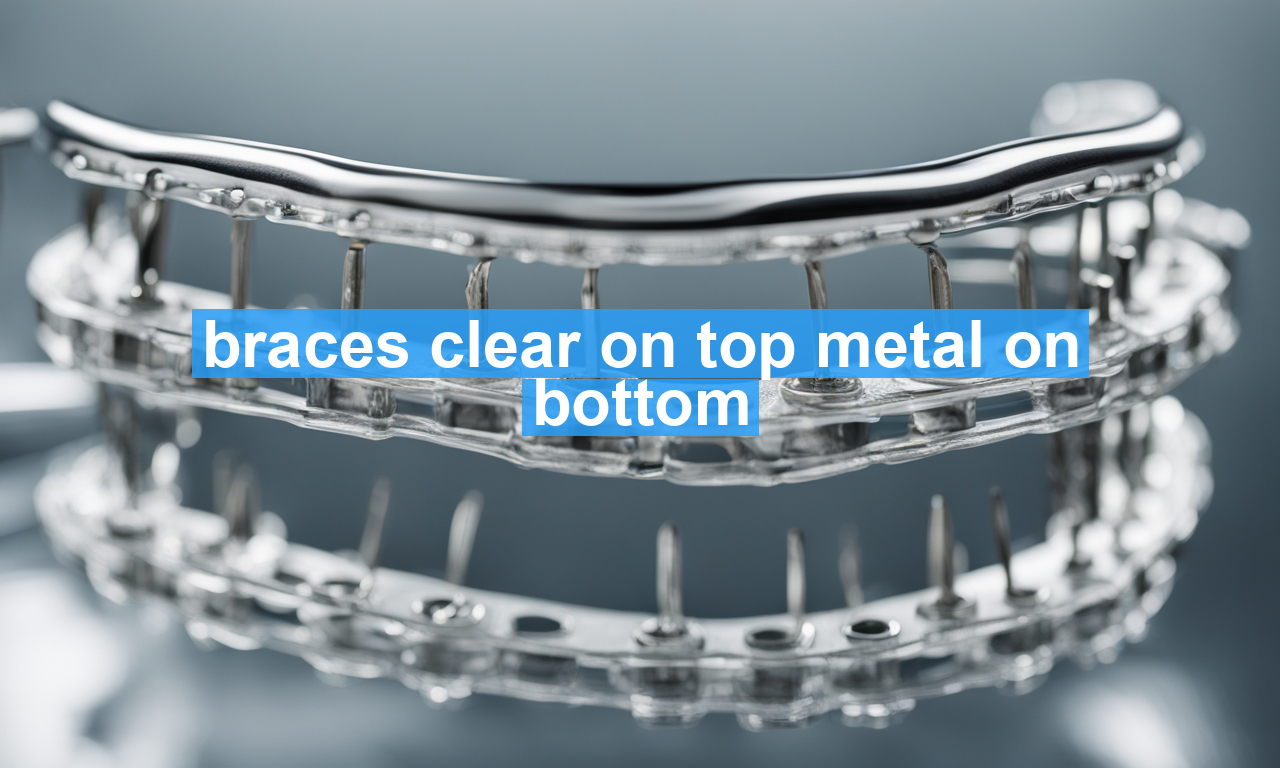Imagine transforming your smile without announcing it to the world! If you’re seeking a blend of subtlety and strength when it comes to orthodontic treatment, consider the increasingly popular choice: clear braces on top and metal braces on the bottom. This unique combination offers the best of both worlds, allowing you to embrace a beautiful smile with confidence. In this blog post, we’ll dive into the specifics, benefits, and some commonly asked questions about this innovative approach to orthodontics.
Why Choose Clear on Top and Metal on Bottom?
The primary advantage of this dual-brace system is aesthetic and functional. Clear braces on the top teeth draw less attention, presenting a more discreet appearance while you smile, talk, or laugh. Meanwhile, metal braces on the bottom provide robustness and stability, especially necessary for more complex tooth movements.
Benefits of Clear Braces on Top
Clear braces, often made from ceramic or porcelain, offer an almost invisible look. Here are some key benefits:
Advantages of Metal Braces on the Bottom
Metal braces have been a staple in orthodontics for decades. Choosing metal for your lower teeth brings several perks:
Common Questions about Mixed Braces
Many people have questions about this unique approach. Below are some common queries:
Are Clear Braces as Effective as Metal Braces?
Absolutely. Clear braces are made from durable materials capable of effectively correcting misalignments. They work similarly to metal braces in applying gentle pressure to reposition teeth over time. The only difference is the material; however, the results are just as impressive. According to an informative [article from Healthline](https://www.healthline.com/health/dental-and-oral-health/ceramic-braces#time), the effectiveness and timeline might be comparable to traditional metal braces, although every case is unique.
What About Comfort?
Both clear and metal braces have pros and cons regarding comfort. Clear braces tend to have smoother surfaces, which might reduce irritation against the cheeks and gums. However, some patients have noted that the brackets are slightly larger than metal ones. Metal braces, being smaller, can feel less intrusive but might cause some discomfort as they are adjusted over time. You can find various solutions for discomfort on reputable [dental care websites](https://www.verywellhealth.com/braces-orthodontics-5091405).
How Do I Maintain Them?
Maintaining your braces is crucial for good dental hygiene and effective treatment. Here are some tips:
What to Expect: The Treatment Process
Understanding the process can put your mind at ease and help you prepare.
Initial Consultation
Your orthodontist will evaluate your teeth and bite to determine if this mixed approach is right for you. X-rays and impressions might be taken for a detailed analysis.
Fitting the Braces
The fitting process includes attaching the clear braces to your upper teeth and the metal ones to your lower teeth. It might take a couple of hours, but it’s pain-free.
Regular Check-Ups
You’ll need to visit your orthodontist regularly for adjustments. These check-ups help monitor progress and make necessary changes to keep your treatment on track.
Completion and Retention
Once the desired outcomes are achieved, the braces are removed. A retainer is usually provided to maintain the new position of your teeth. It’s crucial to wear the retainer as advised to prevent any relapse.
Conclusion
Opting for clear braces on top and metal braces on the bottom could be the ideal solution for those aspiring to achieve a perfect smile without sacrificing aesthetics or functionality. This combination leverages the strengths of both types of braces, ensuring effective treatment and a more confident appearance.
For more information on orthodontic treatment options and the benefits of braces, you might find this [resource from the American Association of Orthodontists](https://www.aaoinfo.org/) helpful.
Embark on your journey to a healthier, more beautiful smile today with the perfect blend of clear and metal braces.

